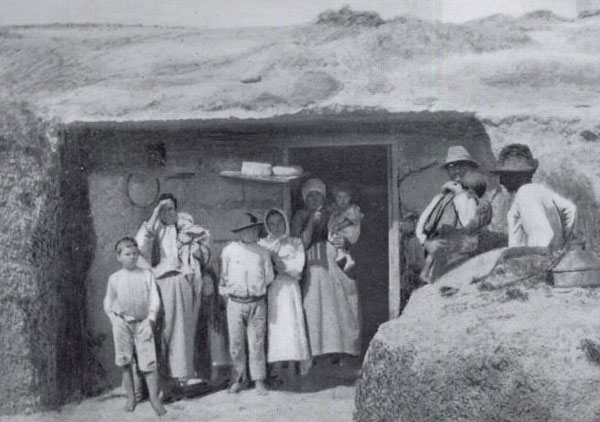Troglodytes in Rio, Tenerife
 Gran Canaria, 1909
In the neighbourhood of Rio, where the surface is formed of singularly even strata of hard grayish tufa, are several hundred troglodytes. They may be regarded as direct descendants of the Guanches, who, five hundred years ago, also lived in caves on this side of the island, and may be, in the same caves. The holes run in regular streets, and vents cut in the upper layer of rock serve as chimneys. At the invitation of a proprietor, I entered his house. It was in two parts, the sleeping-room divided by a natural wall from the stable and kitchen, where an ass lay among the pots and pans. The ceiling was certainly low, but had been chiseled smoothly. But the chief charm of these dwellings is their coolness.
Gran Canaria, 1909
In the neighbourhood of Rio, where the surface is formed of singularly even strata of hard grayish tufa, are several hundred troglodytes. They may be regarded as direct descendants of the Guanches, who, five hundred years ago, also lived in caves on this side of the island, and may be, in the same caves. The holes run in regular streets, and vents cut in the upper layer of rock serve as chimneys. At the invitation of a proprietor, I entered his house. It was in two parts, the sleeping-room divided by a natural wall from the stable and kitchen, where an ass lay among the pots and pans. The ceiling was certainly low, but had been chiseled smoothly. But the chief charm of these dwellings is their coolness.
The Governor-General at Santa Cruz, with a bower of orange trees and tropical shrubs enclosing his palace, cannot enjoy so exhilarating a temperature as these poor troglodytes, who depend for their livelihood upon the one little ass they let for hire when an occasion offers, upon the roots of this hard ungenerous soil, and the rare opportunities of manual labour. This particular cave also held a weaving frame of a rude kind, and the swarthy housewife controlled it while watching her various children, and calming the squeals of her baby. The gofio mill, besides, is an essential in every household.
Charles Edwardes, Rides and Studies in the Canary Islands (1888)



